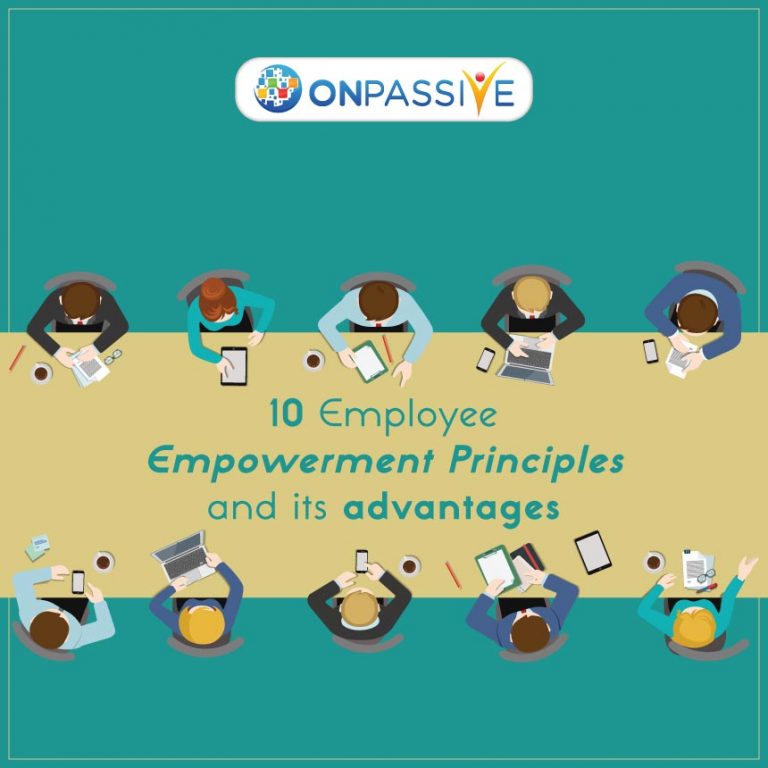
Many utilize the term empowerment without understanding what it indeed implies. A typical comprehension of empowerment is essential, in any case, to permit us to know empowerment when we see it. Empowerment is the way toward expanding the capacity of people or groups to settle o decisions and to change those choices into desired activities and results.
Employee empowerment may not be a new idea to you; however, numerous organizations experience issues since they don’t have a clue how to ‘live it’. Empowerment describes as “having the ability to make decisions”. In any case, this empowerment/decision making power is something that should be acquired, not given, through a bunch of crucial standards developed as follows:
- Responsibility
- Empowerment
- Accountability
- Ownership
- Trust
- Information
Consider employee empowerment as the process of an individual, enabling himself to make a move and control work and making a decision in autonomous ways. Employee involvement and empowerment comes from the individual. Highly Effective Motivation Tricks to Inspire Your Employees
Actualizing principles of employee empowerment can be testing since it includes an extreme move from our traditional method of working. The accompanying guides incorporate the main components for making an engaged and empowered organization:
1. Exhibit That You Value Individuals
You will probably show your gratefulness for every individual’s exceptional worth. Regardless of how representative is performing on their present errand, your incentive for the worker as a person ought to never waiver and consistently be obvious.
2. Share Objectives and Direction
Offer the main objectives and direction for your group. Where conceivable, either gain ground on objectives quantifiable and discernible or determine that you have shared your image of a positive result with the individuals liable for achieving the outcomes.
3. Share and Offer Leadership Vision
Help individuals feel that they are essential for an option that could be greater than themselves and their Work. Please do this by ensuring they know and approach the association’s general mission, vision, and critical plans.
4. Trust Individuals
Trust the goals of individuals to make the best choice, settle on the correct choice, and settle on decisions that, while perhaps not actually what you would choose, still work.
5. Delegate Authority and Effect Opportunities, not merely more Work
Don’t only delegate the drudge work; delegate a portion of the pleasant stuff, as well. You know, delegate the significant gatherings, the advisory group enrollments that impact product development and decision making, and the activities that individuals and clients notice.
6. Provide Data for Dynamic Decision Making
Please verify that you have given individuals, or ensured that they approach, all of the data they require to settle on insightful choices.
7. Take care of Issues: Don’t Pinpoint Issue Individuals
At the point when an issue happens, ask what the individuals is up with the work system that made individuals fall flat, not what is wrong.
8. Give Frequent Feedback
Provide frequent feedback so that individuals know how they are getting along. Now and then, the reason for feedback is reward and acknowledgement just as progress training.
9. Listen to Learn and Ask Inquiries to Give Guidance
Provide a space wherein individuals will don’t hesitate to impart by tuning in to them and afterwards asking them inquiries. Guide them by posing queries, not by instructing them, similar to you would a youngster. Individuals, by and large, know the correct answers if they are allowed the chance to communicate efficiently.
When a representative presents to you an issue to settle, ask, “What do you figure you ought to do to tackle this issue?” Or, ask, “What activity steps do you suggest?”
Ultimately, you will feel good telling the employee that they do not need not ask you about similar comparative circumstances.
10. Help Employees Feel Compensated and Perceived for Empowered Conduct
At the point when employees feel under-compensated, under- named for the duties they take on, under-noticed, under- applauded, and under-appreciated, don’t anticipate results from employee empowerment. The fundamental requirements of employees should feel met for employees to give you their discretionary energy.
Employee involvement and empowerment is the act of developing the core standards of trust, responsibility, accountability, possession and data with employees so they can step up and settle on choices to tackle issues and improve service and performance to clients.


